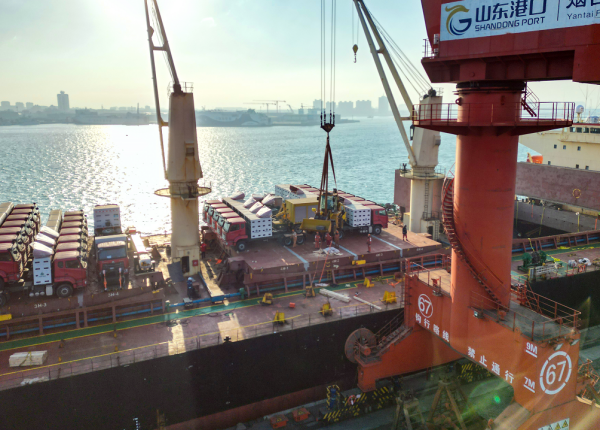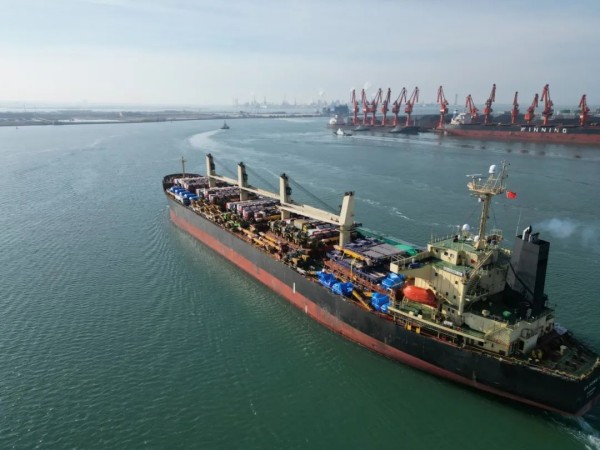A shipment of steel from Tianjin has departed from Yantai Port’s Longkou Port area on its way to Onne in Nigeria.
It is the first time Yantai Port has employed a sea-to-sea transshipment model for general cargo along the Longkou-Onne route, further diversifying export channels for Made-in-China products and injecting new momentum into China-Africa trade.

A shipment of steel and other infrastructure materials has departed from Yantai Port on its way to Nigeria. [Photo/sasac.gov.cn]
As one of the 15 pivotal ports under the Belt and Road Initiative and a key hub in the Bohai Rim region, Yantai Port is committed to building a more efficient, smooth, secure and stable global supply chain for general cargo. Yantai Port launched the Longkou-Onne shipping route to better meet the infrastructure development needs of African countries.

A shipment of steel and other infrastructure materials has departed from Yantai Port on its way to Nigeria. [Photo/sasac.gov.cn]
To further reduce overall logistics costs, Yantai Port has collaborated with shipping companies to optimize logistics models through integrated external services. By analyzing cargo structures and vessel capacities, the port designed a sea-to-sea multimodal transport corridor that has cut comprehensive logistics costs by 20 percent. This innovative approach not only addresses challenges like pollution from road transport and disruptions during winter but also provides stronger logistical support and more efficient overseas routes for Made-in-China products.
Currently, Longkou Port’s China-Africa general cargo liner service covers over 20 countries and regions across Africa, transporting a wide range of goods, including construction machinery, equipment, cement, building materials, containers and vehicles. This high-volume, fast-growing China-Africa logistics corridor is rapidly becoming both a bridge of friendship and a maritime expressway, deepening economic ties between the two regions.
(Executive editor: Wang Ruoting)